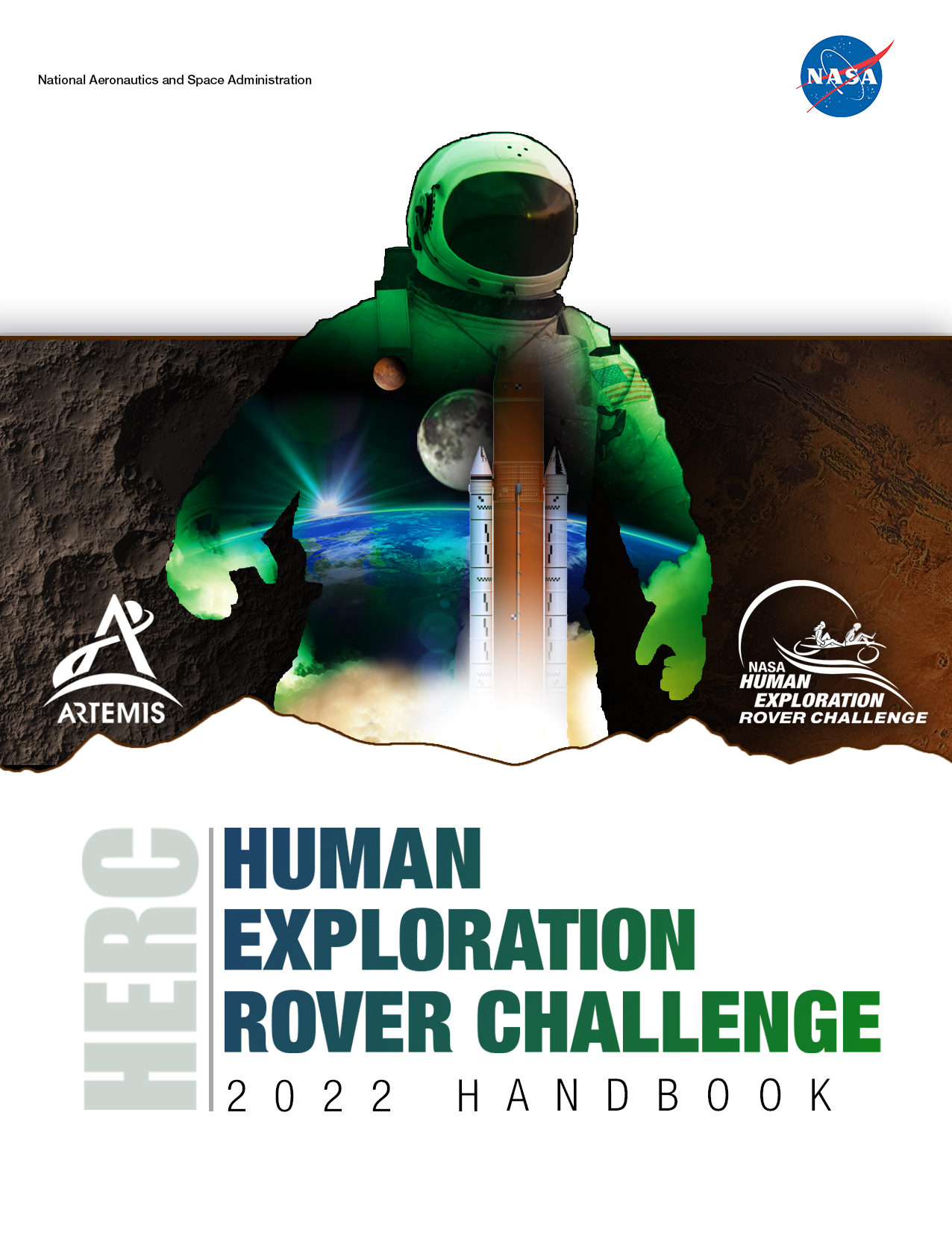NASA’s Human Exploration Rover Challenge – the annual, human-piloted rover design competition, designed to immerse high school, college and university teams in the practical challenges of planning and executing exploratory missions on the surface of other worlds or moons – has issued its updated handbook for the 2021-22 challenge.
The popular engineering challenge, one of NASA’s Artemis Student Challenges, will culminate in three days of student competition at the U.S. Space & Rocket Center in Huntsville, Alabama, on April 28-30, 2022.
The contest, which annually draws about 100 student teams from around the world, reflects the goals of NASA’s Artemis Program, which seeks to put the first woman and first person of color on the Moon. Two drivers from each participating school must pilot their team’s lightweight rover across a winding half-mile course full of scientific challenges and obstacles that simulate otherworldly landscapes.
NASA hopes the experience will inspire participants – and fellow students throughout their communities back home – to pursue careers in science, technology, engineering and mathematics, all of which are vital to the nation’s goals in space.
Event organizers in the Office of STEM Engagement at NASA’s Marshall Space Flight Center in Huntsville encourage interested teams to review the new handbook now available online. NASA’s Office of STEM Engagement works to bring real-world applications of science, technology, engineering and math curricula to students and help mold future leaders in the aerospace workforce.
In years past, participating schools could field up to two rovers. To encourage more teams to take part, NASA this year will limit each school to one rover. A new three-point safety belt system for all drivers also will be implemented to ensure student safety on the physically taxing course. In keeping with COVID-19 health and safety concerns, all necessary masking and social distancing requirements will be enforced as required.
Teams will continue to face periodic review milestones along the path to competition. Introduced in the 2020-21 season, the Design Review and Operational Readiness Review requirements – which count for up to 40% of their overall score – require teams to submit presentations much like official NASA flight readiness reports. They also must plan and conduct their own public STEM engagement activities, primarily aimed at their local middle schools and high schools.
Teams must finish the course in 8 minutes or less, negotiating its obstacles and science tasks to earn points and potentially win awards provided by NASA and its partners. Organizers have streamlined the course, shaving off two obstacles – similar to others students will face along the harrowing route – to reduce the total count to 12.
That will give teams more opportunity to focus on the five unique mission tasks, which require them to dismount from their rovers and take samples or photographs or conduct other simulated science objectives.
“Our goal is to make the Human Exploration Rover Challenge more than just a speed-run against the clock,” said Marshall education specialist Catherine Shelton, one of the event organizers. “We want the science tasks to reflect real work our explorers soon will be doing on the Moon, studying its history and geology, seeking potential resources, and learning to work effectively as a team far from home.”
Download the 2021-22 handbook here:
https://www.nasa.gov/stem/roverchallenge/handbook/index.html
U.S. team registration for the next Rover Challenge will open Sept. 9 and close Oct. 7. International teams must submit proposals for participation by Sept. 9. International teams selected by NASA to participate can complete registration from Oct. 7-14. For more information, interested student advisors or team leads can contact NASA at:
NASA’s Human Exploration Rover Challenge is one of the agency’s most high-profile Artemis Student Challenges, providing hands-on experience to future scientists, engineers, and technologists who one day may plan new NASA science and discovery missions. To learn more about other Artemis Student Challenges, visit:
Janet Sudnik
Marshall Space Flight Center, Huntsville, Alabama
256-544-0034
janet.m.sudnik@nasa.gov



























